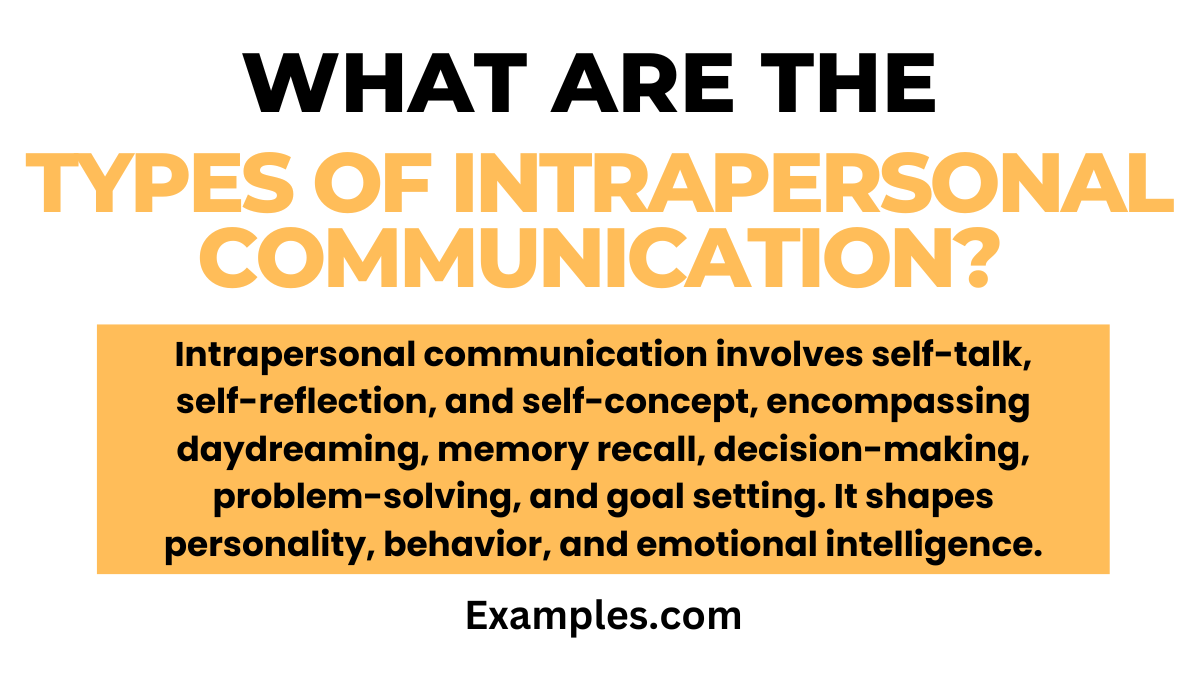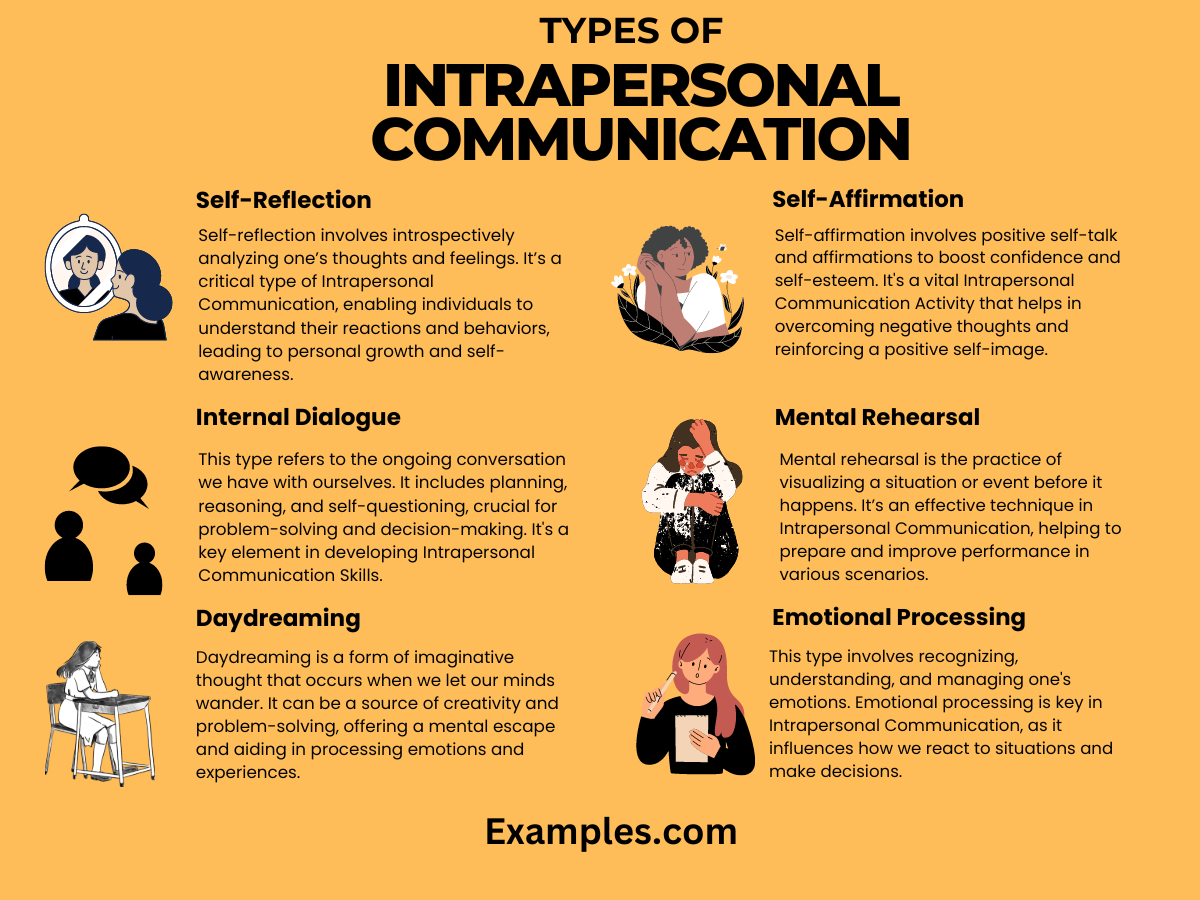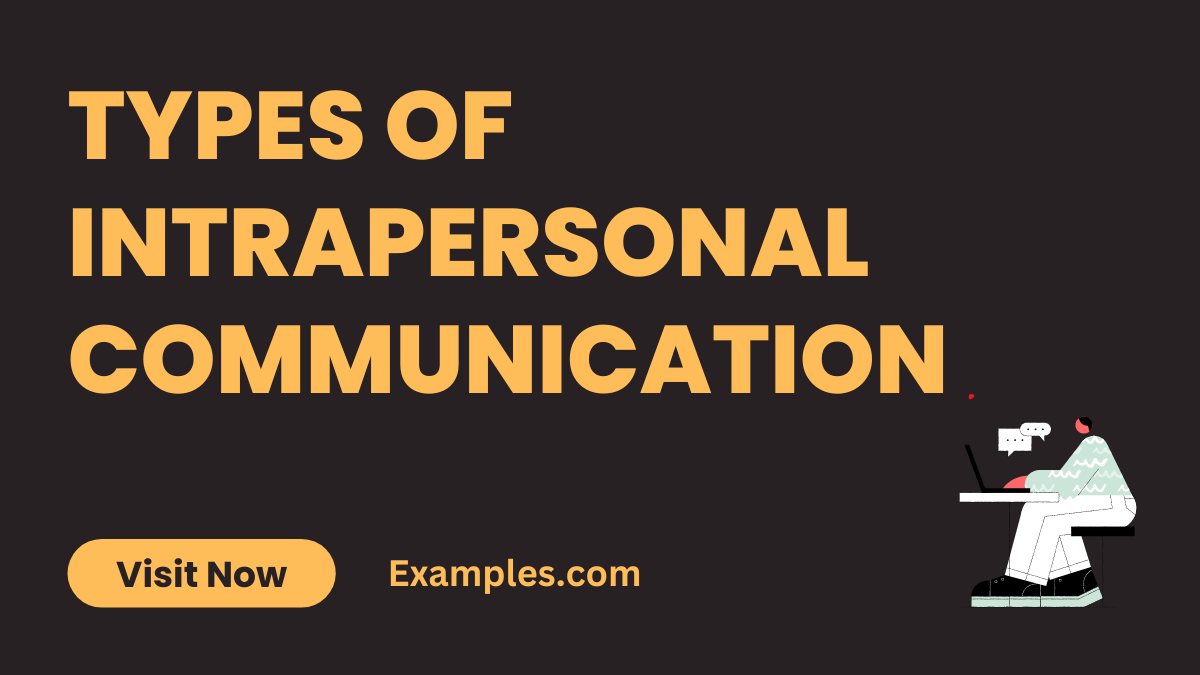Types of Intrapersonal Communication – Examples, Types
Delve into the diverse world of Intrapersonal Communication with our comprehensive guide, exploring its various types and applications. Each type offers unique insights into how we converse with ourselves, shaping our thoughts and emotions. This guide not only explains these types but also enriches your understanding with practical Intrapersonal Communication Examples. Whether you’re seeking personal growth or better self-awareness, these examples and types will provide valuable tools for enhancing your internal dialogue.
What are the Types of Intrapersonal Communication?

The Types of Intrapersonal Communication refer to various forms of communication that occur within an individual. This internal dialogue encompasses thoughts, self-talk, and the mental processing of feelings and information. It’s a personal and introspective form of communication, crucial for self-reflection, decision-making, and emotional regulation. These types include self-questioning, daydreaming, self-affirmations, and analyzing personal experiences. Understanding these types is essential in enhancing Intrapersonal Communication Skills and developing a deeper self-awareness.
10 Types of Intrapersonal Communication

Exploring the Types of Intrapersonal Communication is essential for understanding the complex internal dialogues we engage in. Each type plays a unique role in shaping our thoughts, emotions, and behaviors. Here are 10 significant types, with a detailed guide for each.
1. Self-Reflection
Self-reflection involves introspectively analyzing one’s thoughts and feelings. It’s a critical type of Intrapersonal Communication, enabling individuals to understand their reactions and behaviors, leading to personal growth and self-awareness.
2. Internal Dialogue
This type refers to the ongoing conversation we have with ourselves. It includes planning, reasoning, and self-questioning, crucial for problem-solving and decision-making. It’s a key element in developing Intrapersonal Communication Skills.
3. Daydreaming
Daydreaming is a form of imaginative thought that occurs when we let our minds wander. It can be a source of creativity and problem-solving, offering a mental escape and aiding in processing emotions and experiences.
4. Self-Affirmation
Self-affirmation involves positive self-talk and affirmations to boost confidence and self-esteem. It’s a vital Intrapersonal Communication Activity that helps in overcoming negative thoughts and reinforcing a positive self-image.
5. Mental Rehearsal
Mental rehearsal is the practice of visualizing a situation or event before it happens. It’s an effective technique in Intrapersonal Communication, helping to prepare and improve performance in various scenarios.
6. Emotional Processing
This type involves recognizing, understanding, and managing one’s emotions. Emotional processing is key in Intrapersonal Communication, as it influences how we react to situations and make decisions.
7. Goal Setting
Setting personal goals is a form of intrapersonal communication where individuals plan and strategize to achieve specific objectives. This process is essential for personal development and success.
8. Journaling
Journaling is the practice of writing down thoughts and feelings. It serves as an effective tool for self-reflection and clarity, playing a significant role in Intrapersonal Communication.
9. Cognitive Restructuring
Cognitive restructuring involves changing negative thought patterns into positive ones. It’s a vital aspect of Intrapersonal Communication, essential for improving mental health and overall well-being.
10. Mindfulness
Mindfulness is the practice of being present and fully aware of the current moment. It enhances Intrapersonal Communication by fostering a deeper connection with one’s thoughts and emotions, leading to greater self-awareness and peace of mind.
Each of these types offers unique benefits and insights, contributing significantly to the way we understand and improve ourselves through intrapersonal communication.
In conclusion, understanding the various Types of Intrapersonal Communication is key to enhancing self-awareness and emotional intelligence. This guide has provided insights into different types, each offering unique ways to improve your internal dialogue. Embracing these methods can lead to better decision-making, heightened creativity, and greater personal fulfillment. Use these types as tools for continuous self-improvement and personal growth.



